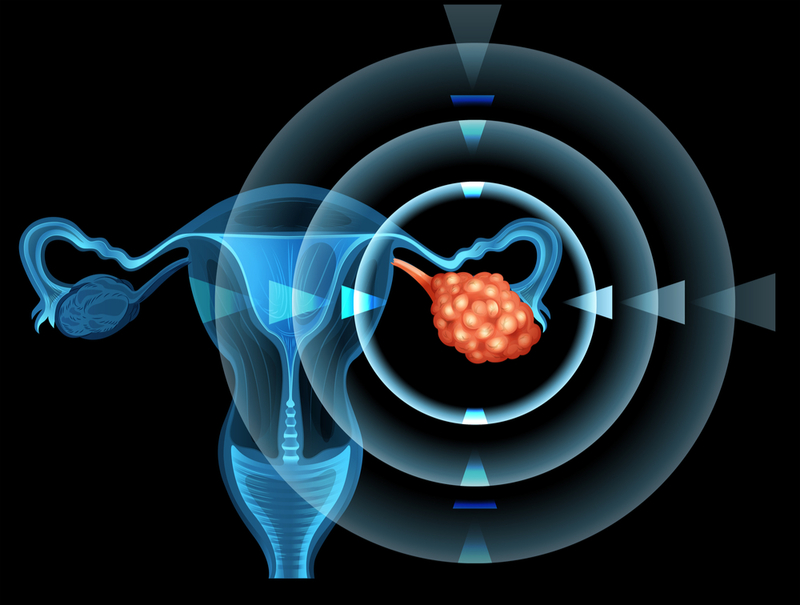Indomethacin may find second calling as ovarian cancer fighter
M3 Global Newsdesk Dec 16, 2017
Indomethacin and other non-steroidal anti-inflammatory drugs (NSAIDs) may have potential applications as cancer treatments, according to a new computer program designed to find new indications for existing medications. The findings were published in Oncogene.

The results of the program, called DrugPredict, were used as a basis for experiments with patient-derived cell lines. The unique strategy is hoped to have an impact on the treatment of epithelial ovarian cancer (EOC).The investigative team was led by Anil Belur Nagaraj, PhD, at the Case Comprehensive Cancer Center, Case Western Reserve University, Cleveland, Ohio.“We have developed a novel drug discovery strategy driven by the novel computational drug-repurposing platform DrugPredict, coupled with validation in ovarian cancer patient-derived xenograft models and have identified indomethacin as a novel potential chemoadjuvant in EOC,”1 the team concluded.
Developing new drugs can take many years. The process can be extremely expensive and the safety and efficacy of the new product is often unknown. The use of computer programs such DrugPredict can speed up the drug discovery process. In addition, the pharmacology and safety profiles of the compounds are already understood.Computational algorithms have previously identified drugs to repurpose for treatment of various diseases, such as neuropsychiatric disorders, infectious diseases, immune-mediated diseases, and some cancers.
Women with high-grade serous ovarian cancer (HGSOC) have poor outcomes, with 5-year survival less than 30%, so the investigators felt that a similar systematic and comprehensive approach should be applied to identify candidates for a repurposed treatment.DrugPredict systematically identifies and prioritizes compounds based on similarities between disease- and drug-specific phenotype profiles and ranks them based on possible ability to treat the disease. The program combines knowledge of how a molecule may interact with human proteins in specific diseases with information about mechanism of action, clinical efficacy, and adverse effects of approved drugs and other compounds.
Among the almost 7,000 chemicals evaluated, DrugPredict found 15 FDA-approved drugs for EOC and ranked them highly, demonstrating the validity of the program. As a class, NSAIDs—specifically indomethacin—also ranked significantly high.Several previous epidemiologic studies have reported that long-term NSAID use is associated with decreased incidence of some types of cancer, as well as delayed progression of malignant disease.2 The Women’s Health Initiative, a large multi-center study with almost ten years of follow-up reported that NSAIDs were associated with reduced risks of some types of cancer, including ovarian cancer.3
For this study, primary patient cell lines were generated from tumor or ascites specimens isolated from patients diagnosed with histologically confirmed HGSOC. The researchers found that indomethacin decreased survival of platinum-sensitive and platinum-resistant HGSOC ovarian tumor cells.Indomethacin had minimal effect on non-transformed fallopian tube and ovarian surface epithelium cells, suggesting that doses causing cell death in ovarian tumor cells might not affect normal ovarian function.
To test the utility of indomethacin as a potential chemoadjuvant compound, the investigators combined indomethacin and cisplatin. They reported that the combination decreased cell viability more effectively than cisplatin alone in cells that were both sensitive and resistant to cisplatin.The investigators hypothesized that a primary mechanism of the anti-tumor effects of indomethacin is downregulation of Wnt/B-catenin signaling. NSAIDs that belong to the category of (cyclo-oxygenase-1) COX-1 inhibitors function as anticancer agents by both COX-1-dependent and -independent mechanisms.
Prostaglandin E2 (PEG2) is driven by COX-1 and is an important component of tumors. The Wnt/B-catenin signaling pathway is a COX-independent mechanism and could be important in determining the anti-tumor effects of NSAIDs.Aldehyde dehydrogenase 1 (ALDH1) expression could be involved in early transformation events in EOC. ALDH1 has been identified as a direct target of B-catenin in ovarian tumor cells, suggesting that Wnt/B-catenin signaling could have an important role in regulating tumor-initiating cells (TICs).
The authors reported that indomethacin-induced cell cycle arrest led to decreased tumor sphere formation and decreased expression of Wnt/B-catenin transcriptional targets that regulates TIC function.“These results suggest that indomethacin could be used as a chemoadjuvant in EOC to eradicate both non-TICs (ALDH neg) and TICs (ALDH pos) in ovarian cancer, thus potentially overcoming the barrier of tumor recurrence in ovarian cancer,” they wrote.The investigators caution that the study had some limitations. Some phenotypes can be both a treatment and toxicity. Currently, DrugPredict lacks the ability to classify such associations. Furthermore, they point out that it is important to evaluate the efficacy of indomethacin as a chemoadjuvant in clinical trials.
-
Exclusive Write-ups & Webinars by KOLs
-
Daily Quiz by specialty
-
Paid Market Research Surveys
-
Case discussions, News & Journals' summaries